Our Blog - August 2025 - England trip - Bateman's (home of Rudyard Kipling)
Bateman's was the home of Rudyard Kipling and his family from 1902 until his death in 1936. The house itself was built in 1634 and it had been occupied by a variety of people including parsons, farmers and tradesmen. I couldn't find any rationale for it being called "Bateman’s" because there was never a record of anyone living there named ‘Bateman’. By the end of the 19th century, it was a farmhouse in a pretty bad state. The Kiplings first saw it in 1900, on returning to England from America, following the death of their daughter Josephine in 1899 and a disastrous falling-out between them and Carrie Kipling's brother, Beatty Balestier. Enchanted by the house, they were too slow in making an offer and they had to wait 2 more years to purchase it (and 33 acres of land).
After Kipling died, his widow Caroline continued to live there until 1939, when it was donated to the National Trust. The National Trust started around 1895 and in the early years, it was concerned primarily with the acquisition of open spaces. They weren't really yet setup to have historical houses, and so it was rented out. The volunteer in one of the rooms mentioned that people would just come up and knock on the door, and if someone was home, they might give a quick tour. The only room NOT rented was the study (which you will see later). They finally got around to figuring out how to manage historical homes and it is now open to the public with volunteers explaining things in various rooms.
In 1911, Kipling bought his first Rolls-Royce. This one is from 1928 and is on display next to the house. I apologize for the reflections but, unfortunately, it was a sunny day in England!
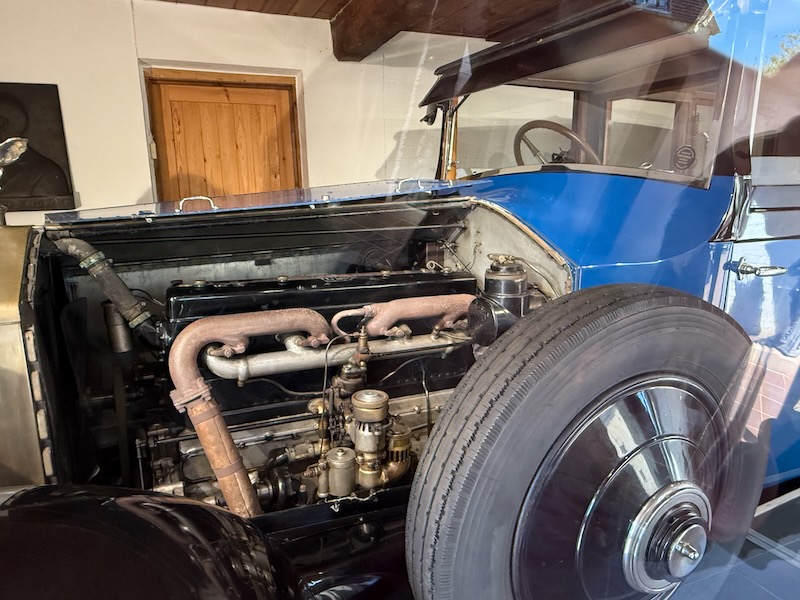
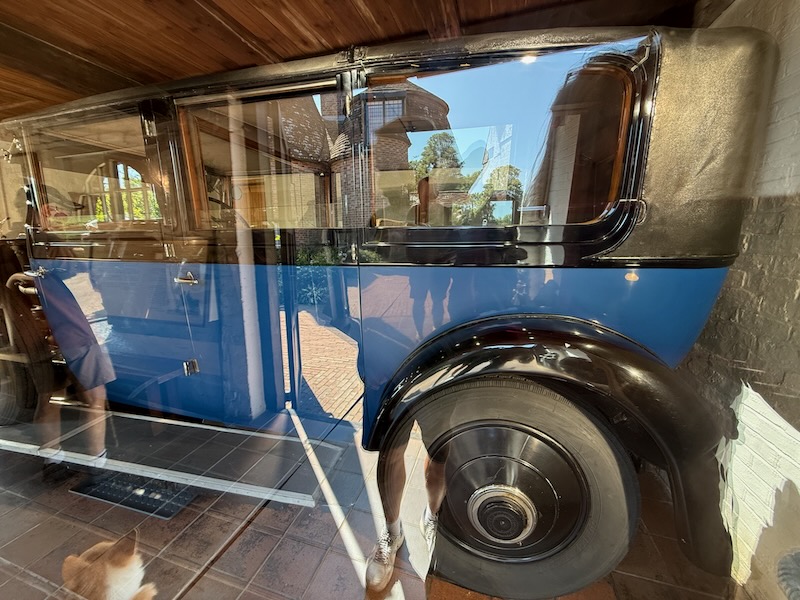
It is a 2-story sandstone house with mullioned windows are and a row of 6 diamond-shaped red brick chimney stacks. It definitely isn't a castle or a huge mansion, but it probably was considered huge and impressive in 1634 when built.
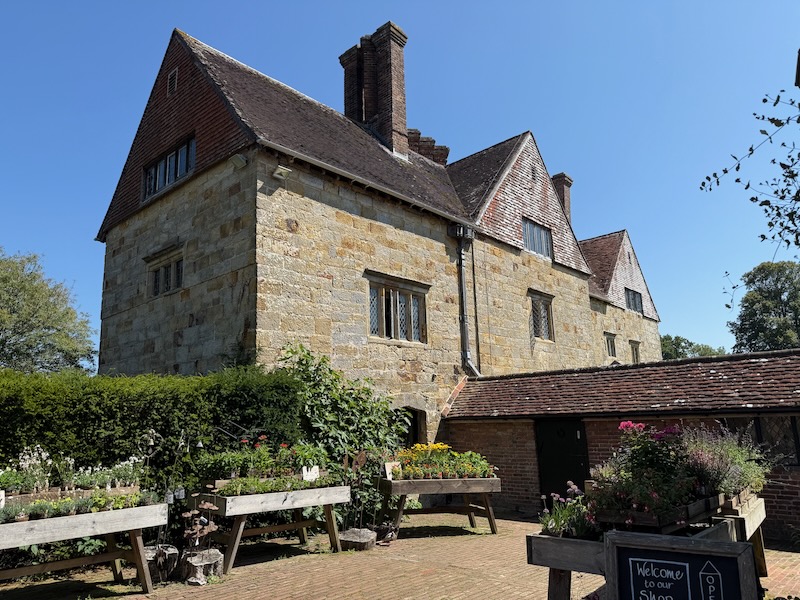
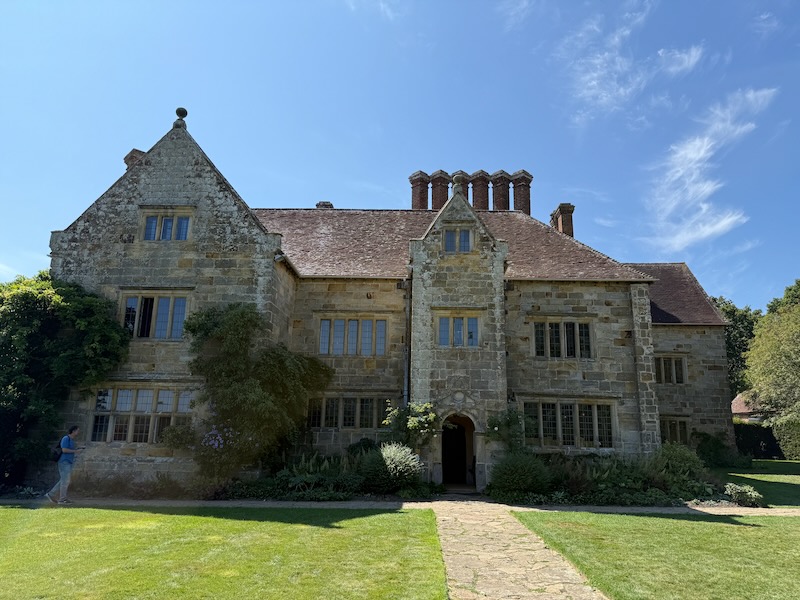
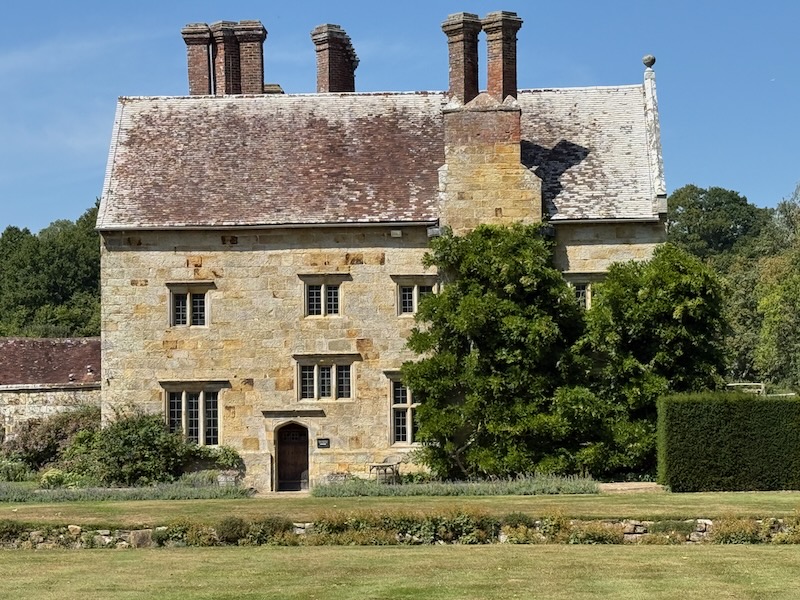
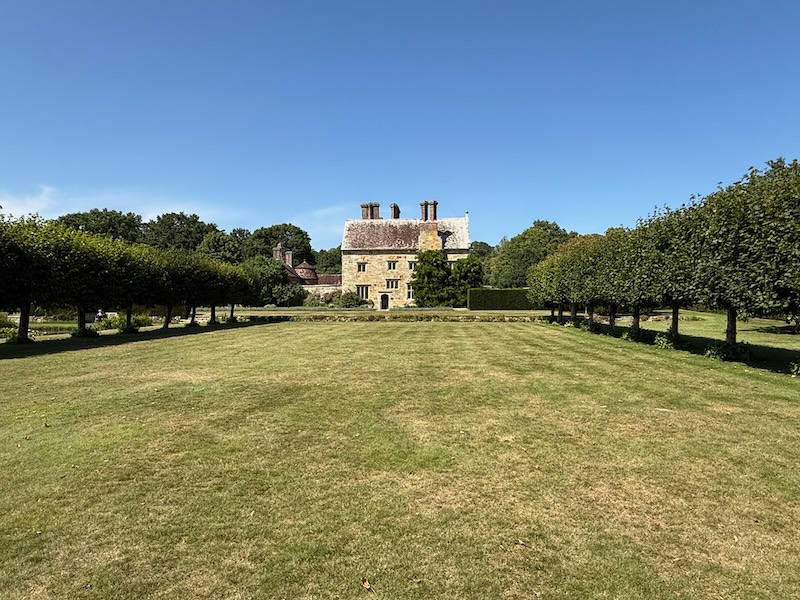
The garden was created in 1917.
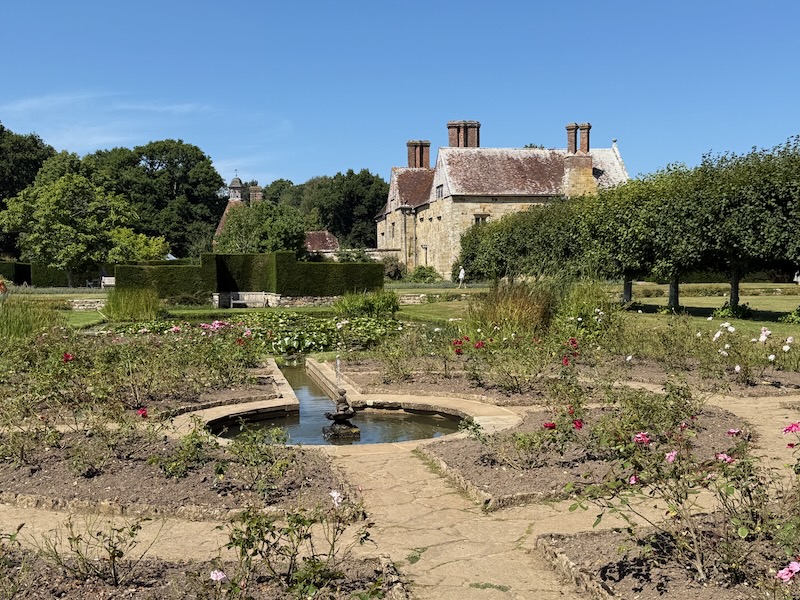
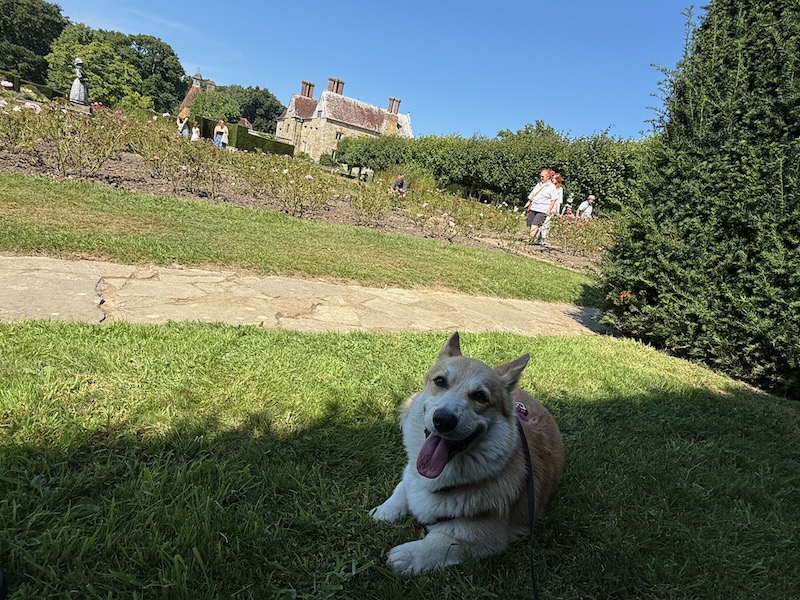
We were able to go through (I think) the entire house and there were volunteers in each room to tell us about the room and answer any questions. The interior has been returned to how it was at the time of the Kiplings. Most of the furniture is also from the family, which was removed by Kipling's daughter when her mother died and kept in storage, then returned when it was opened to the public. The dining room had a very interesting wallpaper, which is embossed and polychrome-decorated leather. It was created between 1735 and 1745, so it predates the Kipling family. The volunteer had us go look around a cabinet that was there to see the more "original" color, since the rest of the room has been darkened. You can see the line between the bright yellow background and the more muted background to the right.
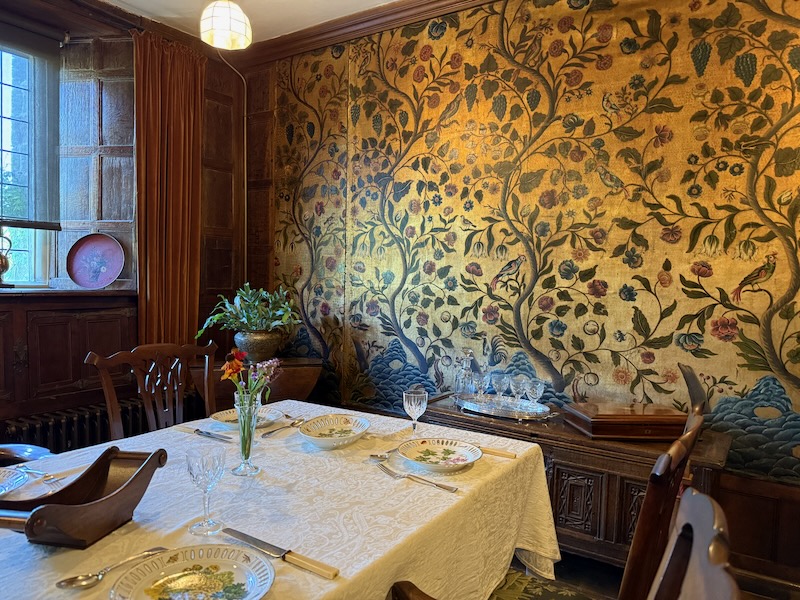
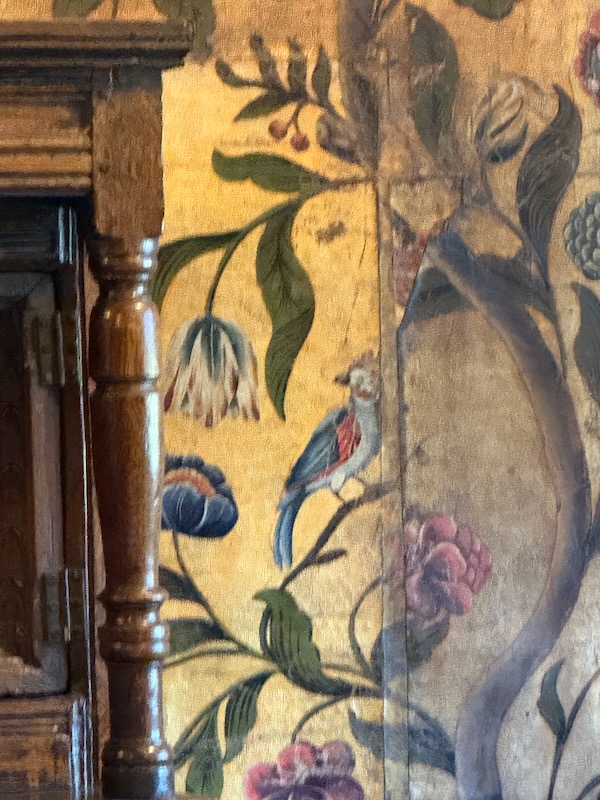
Here we have the hallway or entry room, with dark paneling and wood ceiling beams, along with a massive fireplace. Through the doorway you can see the stairs that go up to the 1st floor.
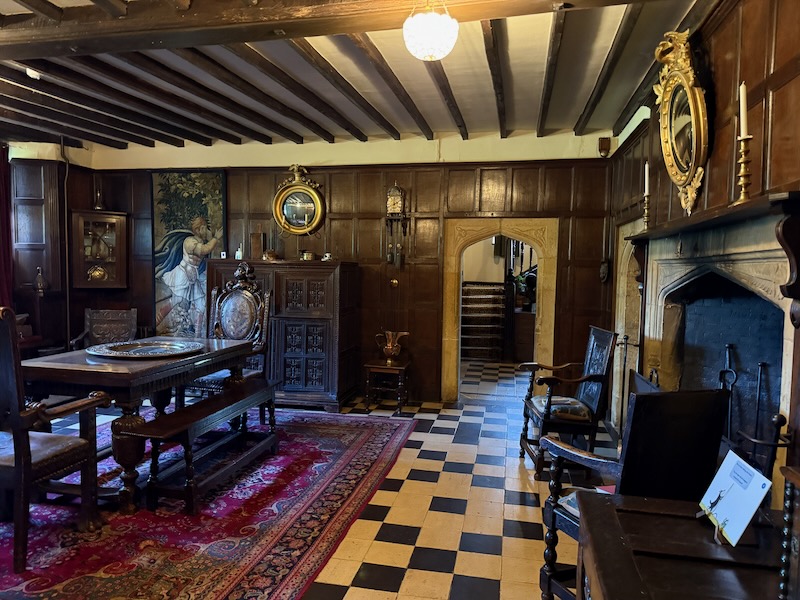
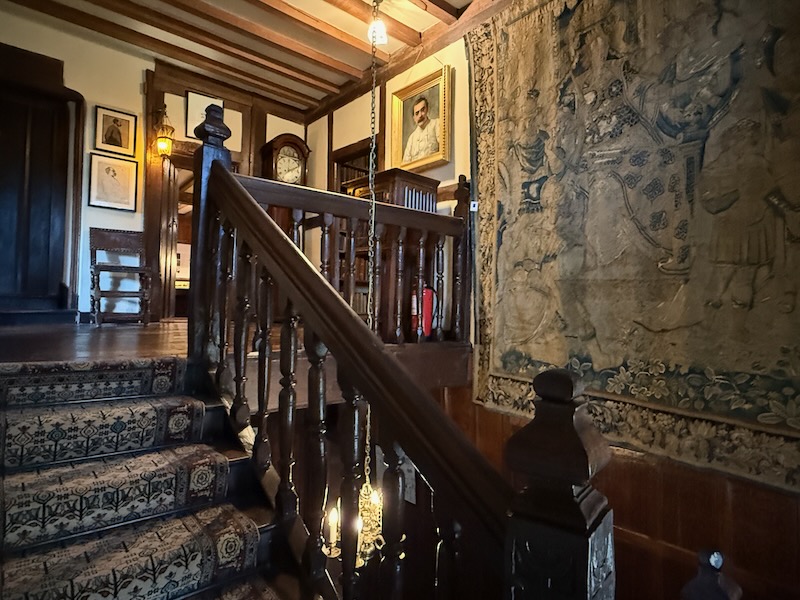
The study is almost as Kipling left it. This is the actual place where he wrote "Puck of Pook’s Hill" and "Rewards and Fairies" (neither of which have I read).
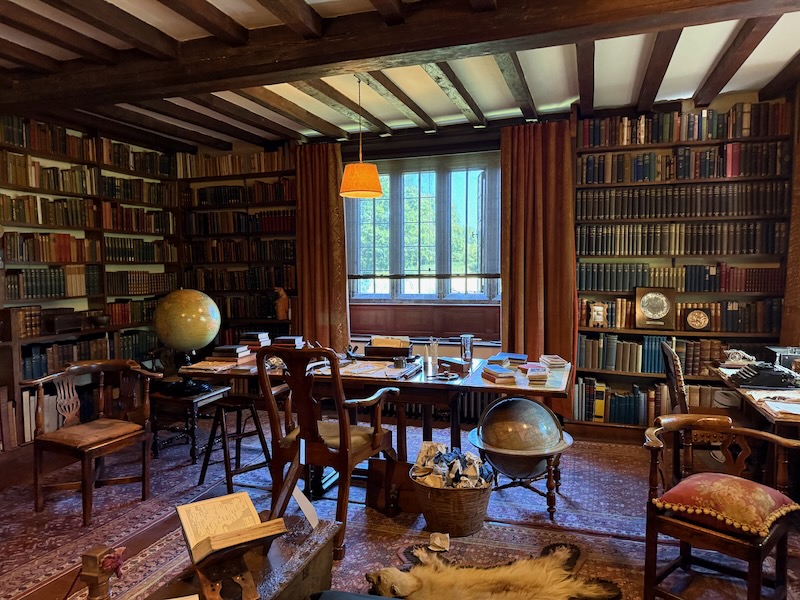
I didn't really know much about Rudyard Kipling other than The Jungle Book, which I didn't read but saw the Disney movie of. He was actually born in India and spent his early childhood there before finishing boarding school in England. He returned to India as a young man. Caroline, his wife, was from New York and after getting married, they moved to Vermont in 1896 where they lived until 1902.